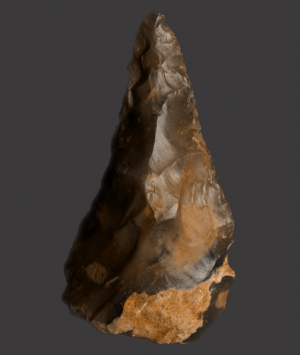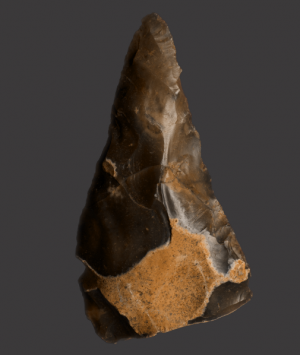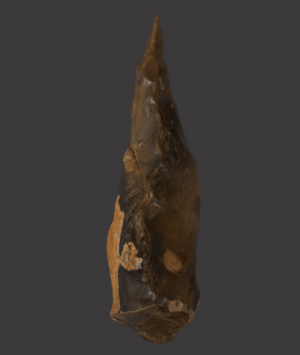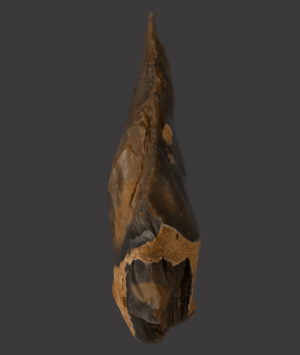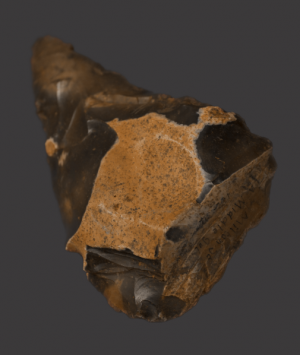Item number: 5080
An Important British Palaeolithic Flint Hand Axe
From the Middle Gravels at ‘Barnfield Pit’, Swanscombe, Kent
Discovered on the 1st February 1934
Ex Henry Dewey Collection, Ex English Private Collection
With a variety of motivating factors, ever since their conception ancient flint tools have been coveted and prized by mankind. In the late 18th Century the pioneering Antiquarian ‘John Frere’ sent two flint hand axes to the Royal Academy in London and in an associated letter famously conveyed his radical interpretation of the finds, concluding that they had been “fabricated and used by a people who had not the use of metals”, in addition, “the situation in which theses weapons were found may tempt us to refer them to a very remote period indeed, even beyond that of the present world”. A view disregarded at the time due to overwhelming conflicting religious beliefs.
During the 19th and early 20th century, a combination of further discoveries, expanding knowledge and understanding of these ancient artefact’s led to extensive collections of hand axes being formed, mainly consisting of finds from gravel pits sourced from workmen eager to supplement their income with the additional pay such discoveries opportuned.
These finds are still being studied and debated, based on much evidence it is now generally accepted that many fine implements had a significance far beyond function, a visual display of the makers knowledge and skill or as a means of conveying the owners social status or power and certainly providing conclusive proof that our ancient ancestors possessed a high degree of culture evidenced in the beautiful reoccurring hand axe forms which are today being reappraised and increasingly appreciated as art in the contemporary world, in addition to their important archaeological significance.
Barnfield Pit, Swanscombe is arguably the most famous palaeolithic site in Britain. Now a National nature reserve and designated site of special scientific interest, (SSSI), it is perhaps best known for for the wealth and beauty of the extraordinary palaeolithic artefact’s it has produced, most notably hand axes and of course the fragments of Neanderthal skull discovered in 1935/1936 which gave rise to the term, ‘Swanscombe Man’.
This rare, large and superb British Palaeolithic hand axe displays fine workmanship and has acquired a beautiful patina from this most classic locality.
Dimensions (Approximate)
Length: 16cm, Width: 8.5cm (At widest point)

